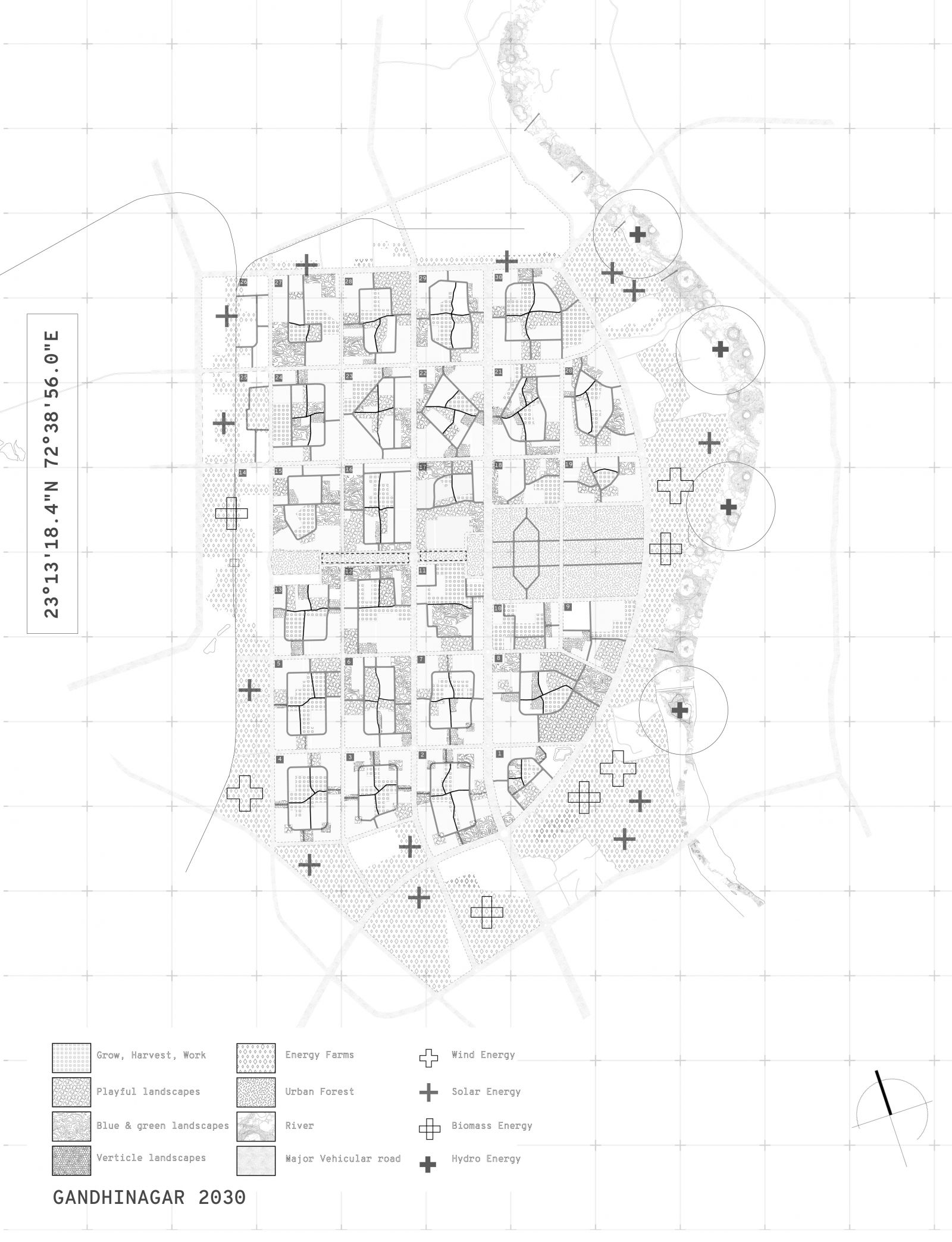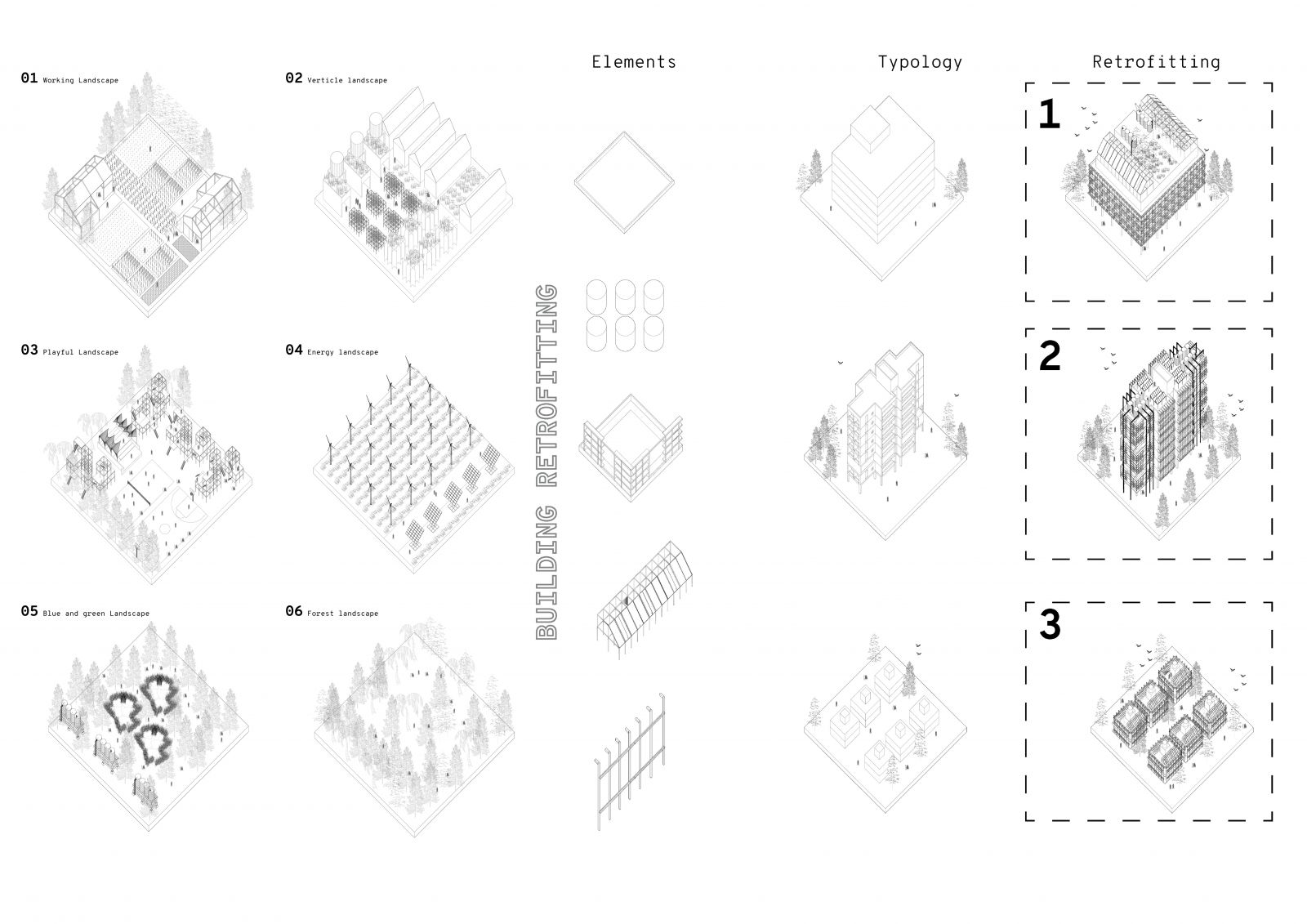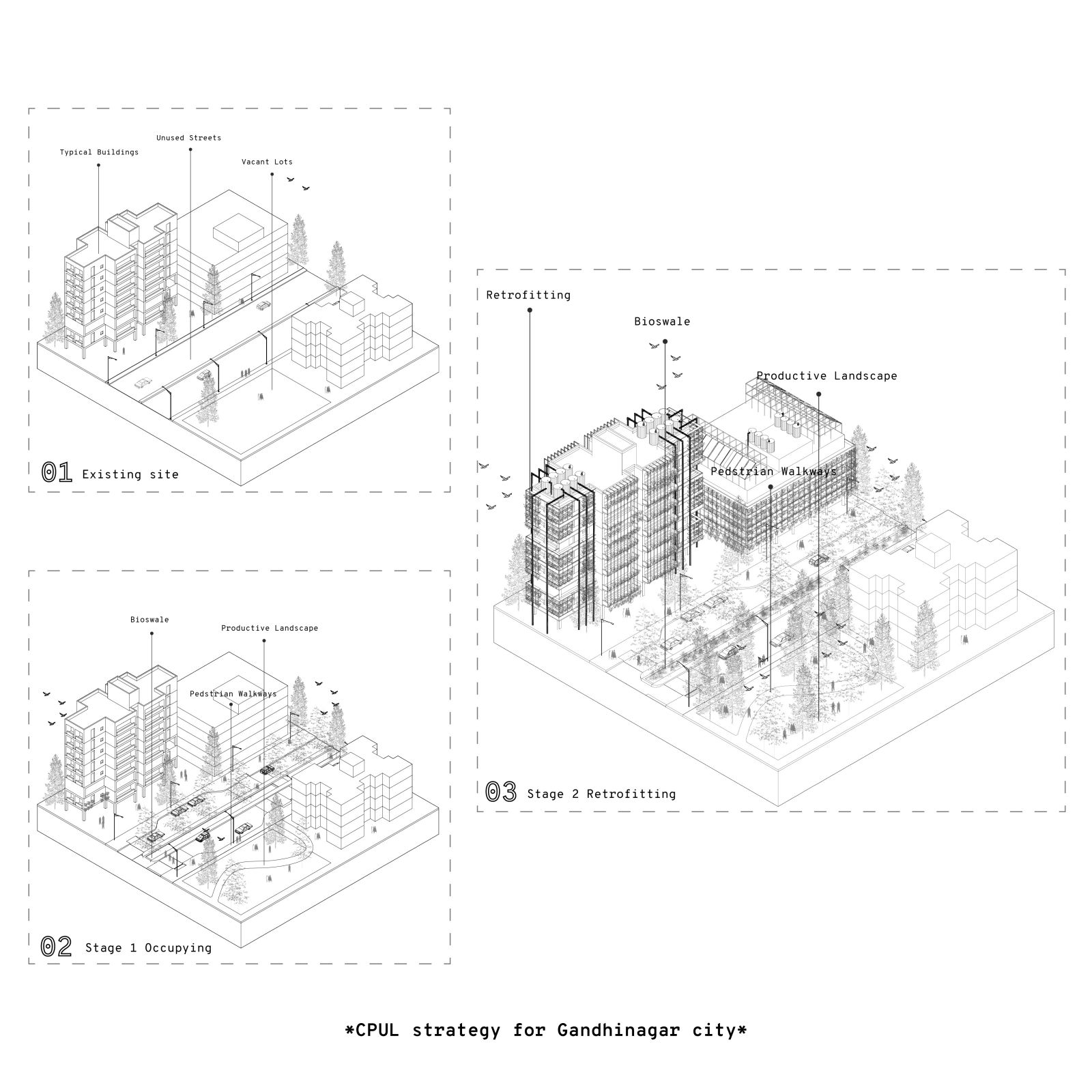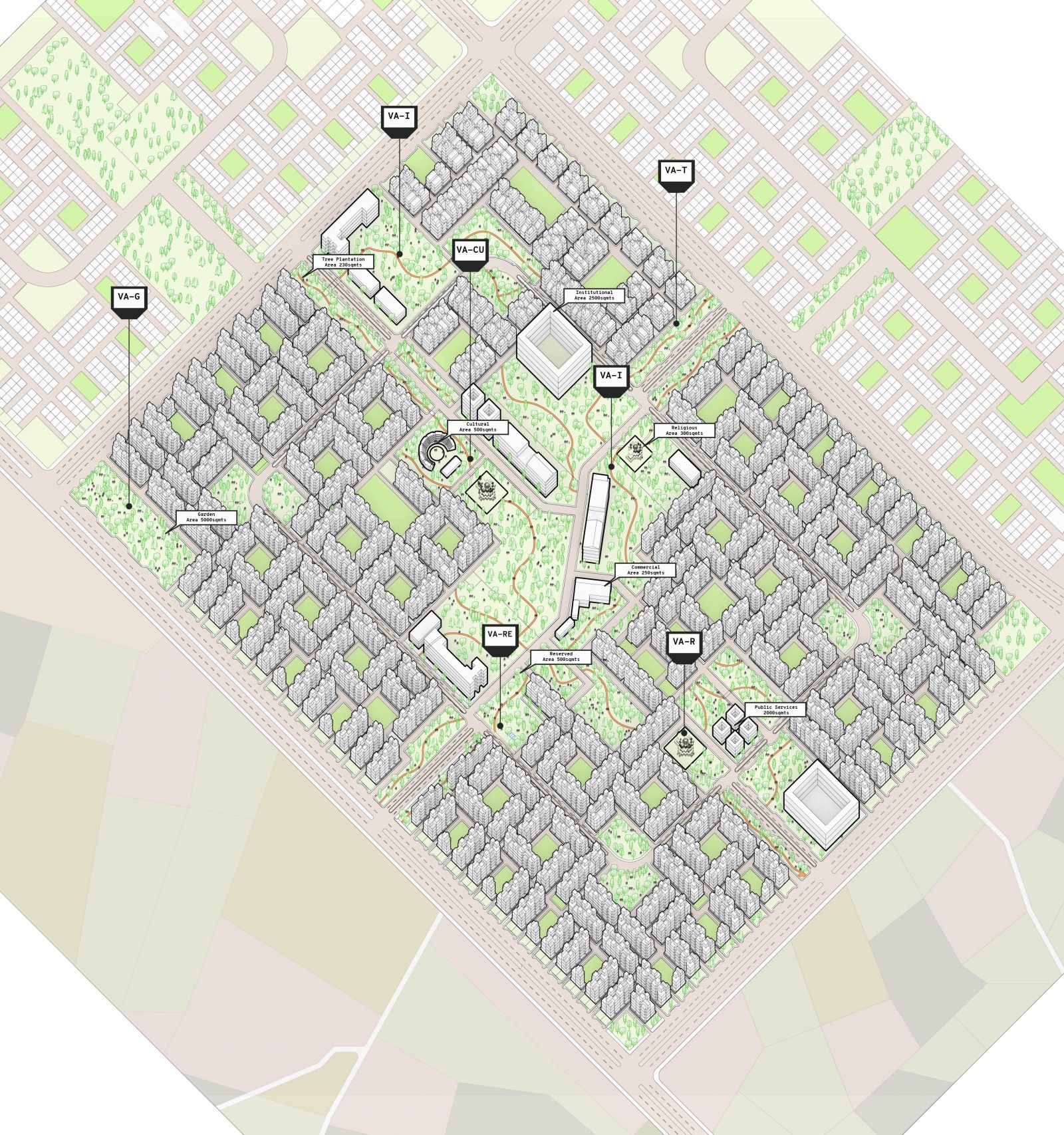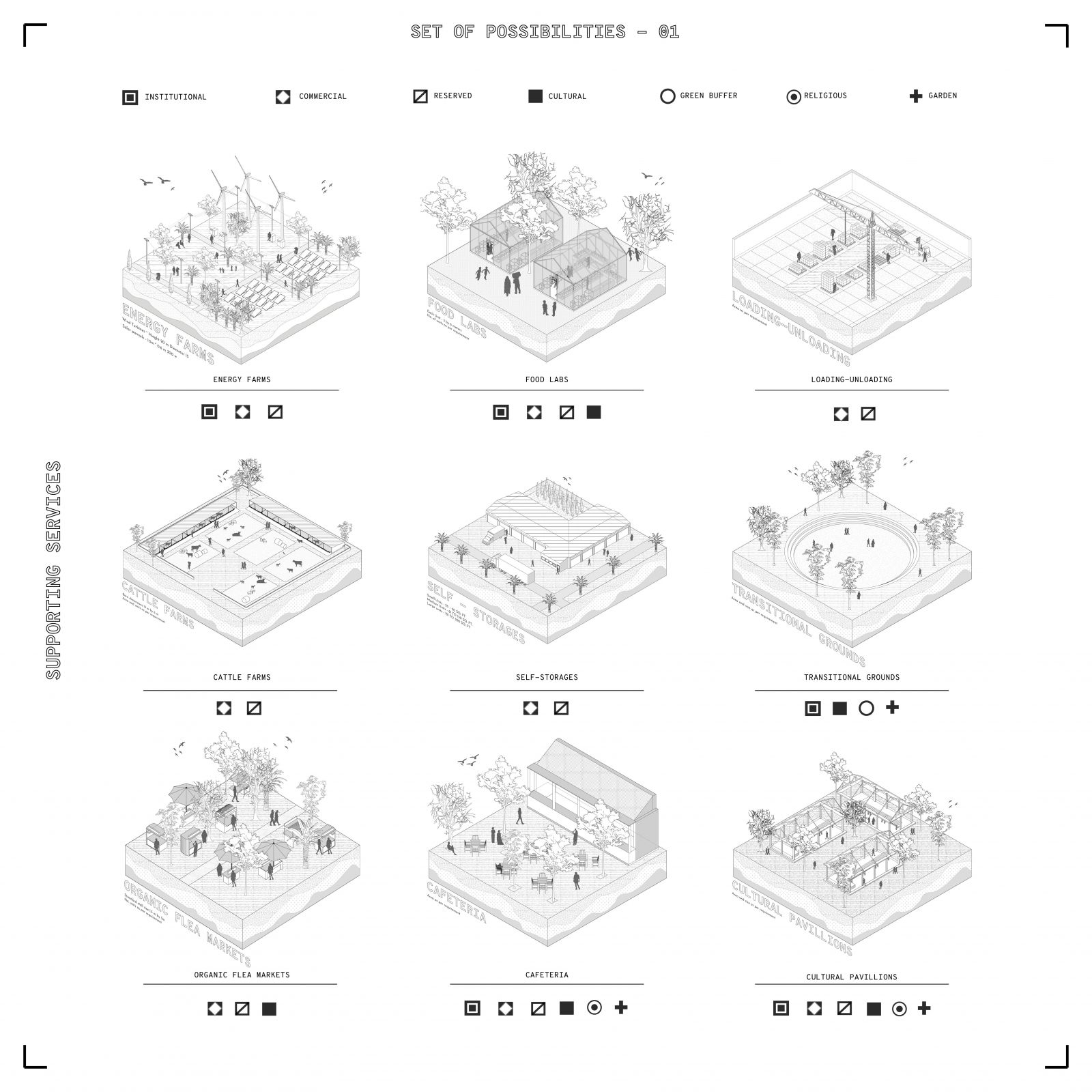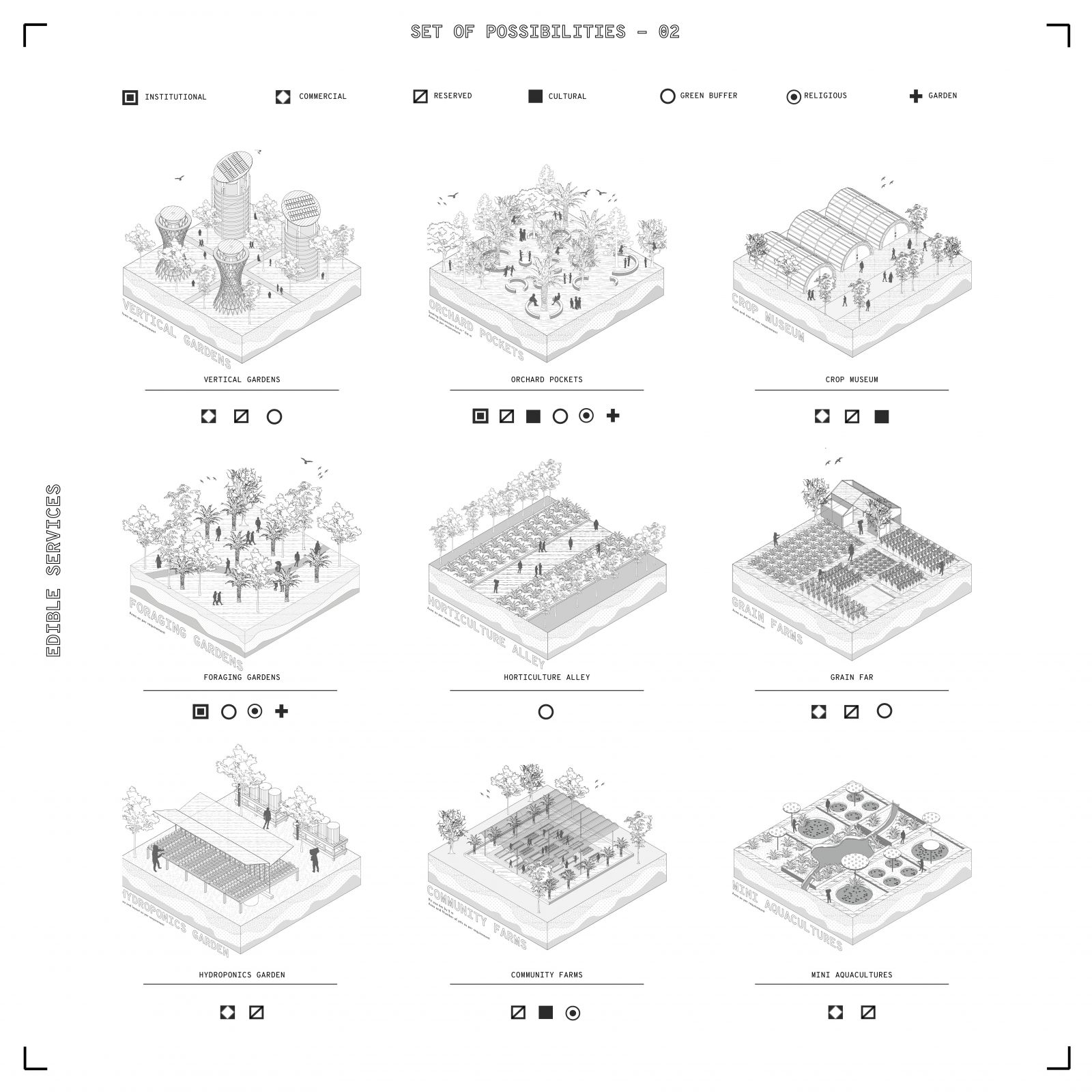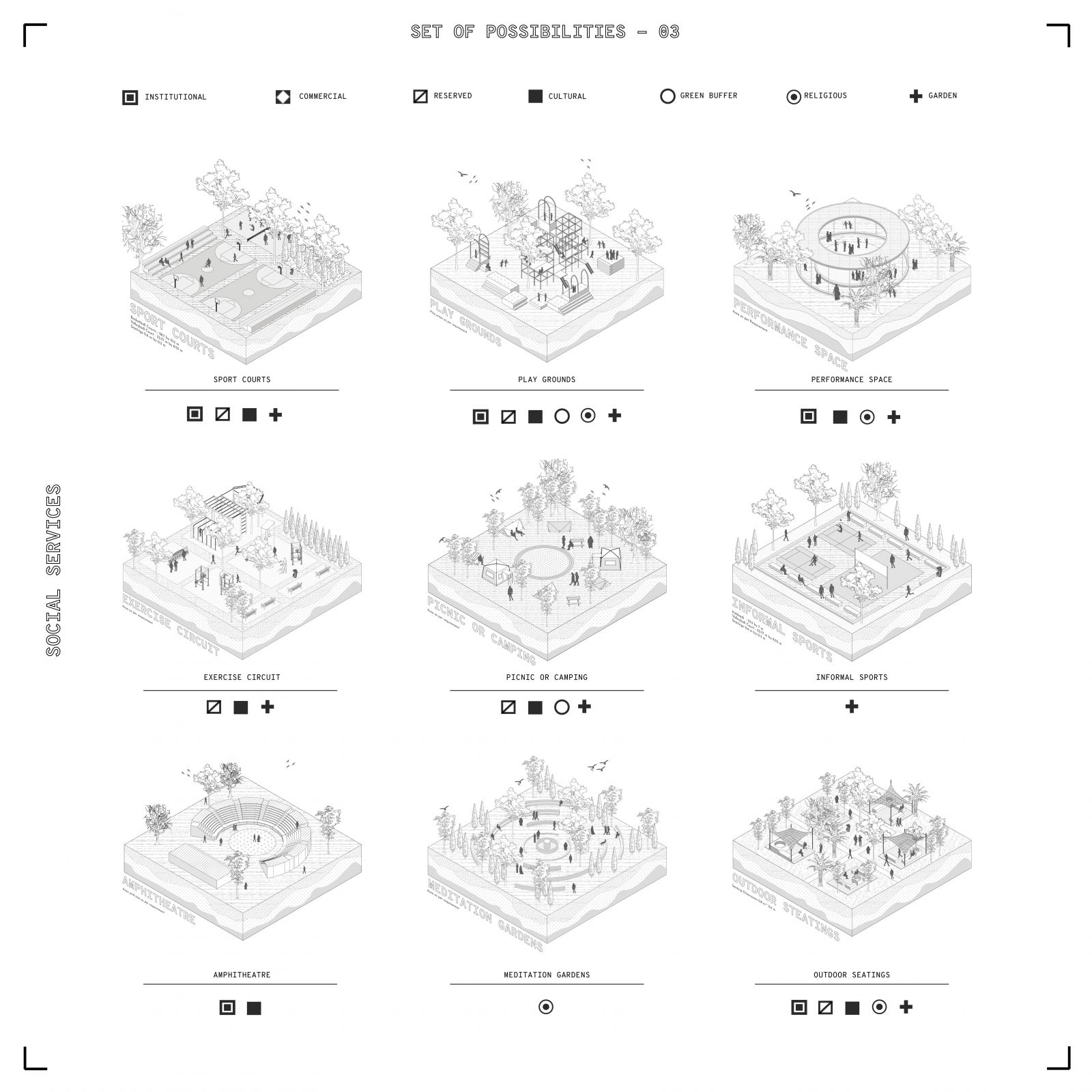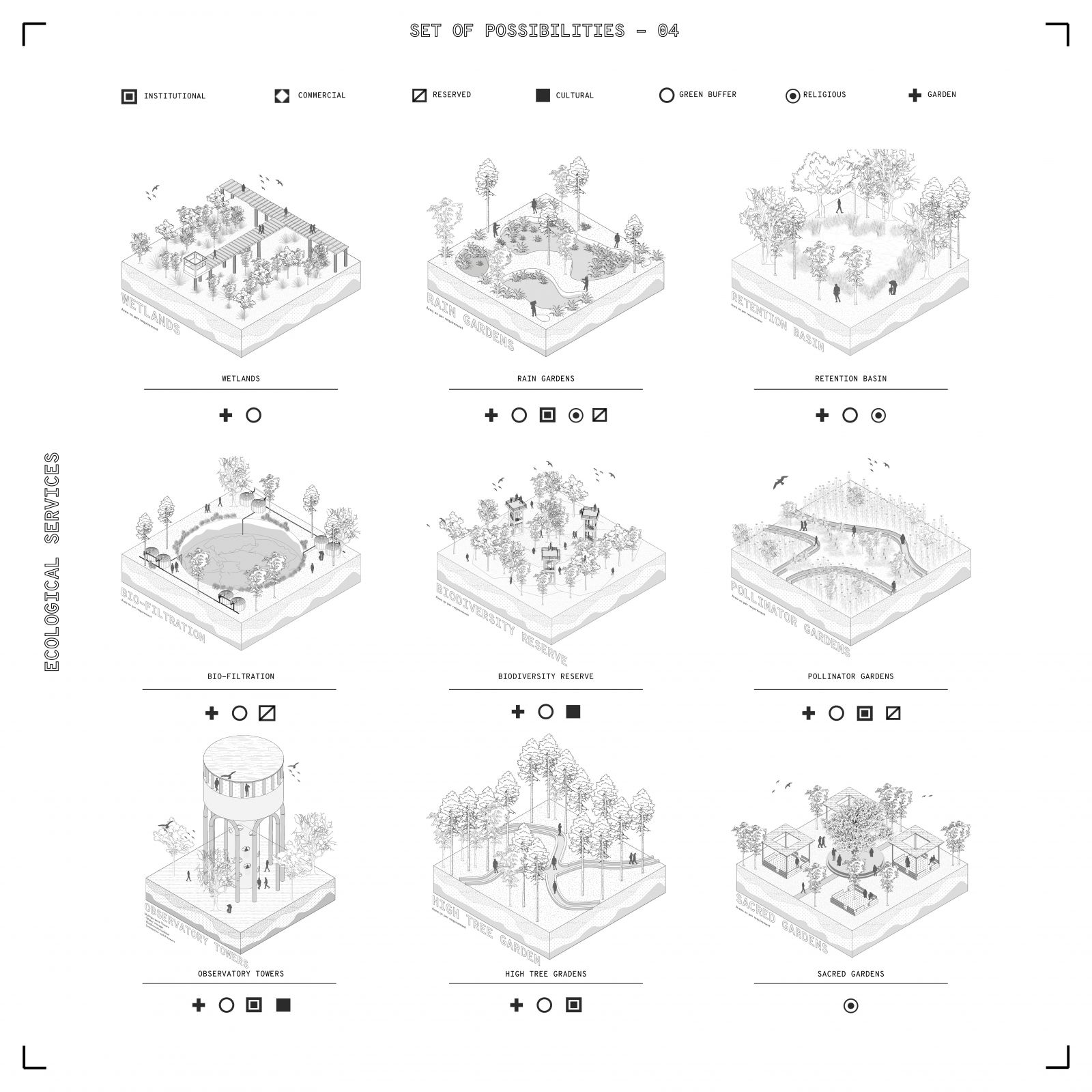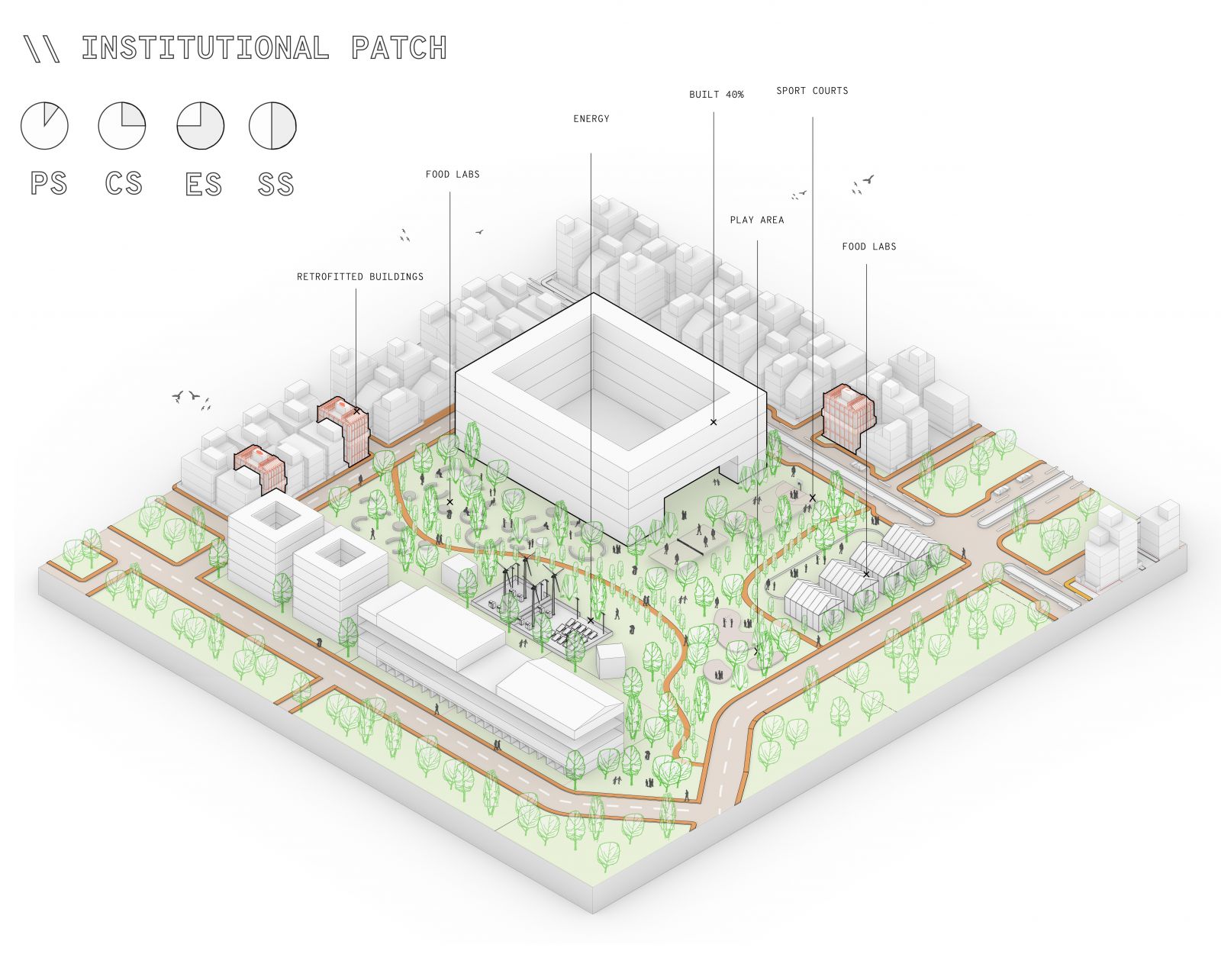Your browser is out-of-date!
For a richer surfing experience on our website, please update your browser. Update my browser now!
For a richer surfing experience on our website, please update your browser. Update my browser now!
The project attempts to utilize the voids in Gandhinagar city and stitches the inner-urban parcels to create a new continuous productive corridor. By strategically identifying and transforming the vacant or under-used areas into a productive landscape, the project aims to redefine the meaning and functioning of the vacancy in the city. To achieve this spatial integration and continuation, the proposal makes guidelines for public land, street design, and existing typologies. And together the integration can bring fragmented open spaces into a continuous resilient system. Overall it creates continuous productive landscape within the sector that in the long run creates a positive environmental impact.
View Additional Work